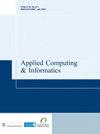意大利严重急性呼吸系统综合征冠状病毒2型疫情的SEIR分区模型计算
IF 4.9
Q1 COMPUTER SCIENCE, INFORMATION SYSTEMS
引用次数: 9
摘要
目的在中国武汉发现新型严重急性呼吸系统综合征冠状病毒2型(SARS-CoV-2)后,一场大流行在全球范围内广泛传播。在意大利,截至2020年6月底,约有24万人因该病毒感染,其中34721人死亡。为了控制这一新的流行病,流行病学家建议实施严格的缓解措施,如国家封锁、接触者追踪或检测、保持社交距离和自我隔离。设计/方法/方法本文提出了最流行的易感(S)、暴露(E)、,感染(I)和康复(R)统称为SEIR,以了解病毒在意大利人群中的传播。FindingsDeveloped SEIR模型解释了意大利各地的感染增长,并显示了国家封锁前后的流行率。结果表明,采取严格措施,如国家封锁和高检测,使意大利实际上成为一个没有疫情的国家。原创性/价值这些模型在很大程度上有助于估计和了解传染源如何在特定国家传播,以及个别因素如何影响动态。像经典SEIR建模这样的进一步研究可以提高数据质量,并且这种建模的实现可以代表流行病模型的新颖性。本文章由计算机程序翻译,如有差异,请以英文原文为准。
SARS-CoV-2 epidemic calculation in Italy by SEIR compartmental models
PurposeAfter the identification of a novel severe acute respiratory syndrome coronavirus 2 (SARS-CoV-2) at Wuhan, China, a pandemic was widely spread worldwide. In Italy, about 240,000 people were infected because of this virus including 34,721 deaths until the end of June 2020. To control this new pandemic, epidemiologists recommend the enforcement of serious mitigation measures like country lockdown, contact tracing or testing, social distancing and self-isolation.Design/methodology/approachThis paper presents the most popular epidemic model of susceptible (S), exposed (E), infected (I) and recovered (R) collectively called SEIR to understand the virus spreading among the Italian population.FindingsDeveloped SEIR model explains the infection growth across Italy and presents epidemic rates after and before country lockdown. The results demonstrated that follow-up of strict measures such that country lockdown along with high testing is making Italy practically a pandemic-free country.Originality/valueThese models largely help to estimate and understand how an infectious agent spreads in a particular country and how individual factors can affect the dynamics. Further studies like classical SEIR modeling can improve the quality of data and implementation of this modeling could represent a novelty of epidemic models.
求助全文
通过发布文献求助,成功后即可免费获取论文全文。
去求助
来源期刊

Applied Computing and Informatics
Computer Science-Information Systems
CiteScore
12.20
自引率
0.00%
发文量
0
审稿时长
39 weeks
期刊介绍:
Applied Computing and Informatics aims to be timely in disseminating leading-edge knowledge to researchers, practitioners and academics whose interest is in the latest developments in applied computing and information systems concepts, strategies, practices, tools and technologies. In particular, the journal encourages research studies that have significant contributions to make to the continuous development and improvement of IT practices in the Kingdom of Saudi Arabia and other countries. By doing so, the journal attempts to bridge the gap between the academic and industrial community, and therefore, welcomes theoretically grounded, methodologically sound research studies that address various IT-related problems and innovations of an applied nature. The journal will serve as a forum for practitioners, researchers, managers and IT policy makers to share their knowledge and experience in the design, development, implementation, management and evaluation of various IT applications. Contributions may deal with, but are not limited to: • Internet and E-Commerce Architecture, Infrastructure, Models, Deployment Strategies and Methodologies. • E-Business and E-Government Adoption. • Mobile Commerce and their Applications. • Applied Telecommunication Networks. • Software Engineering Approaches, Methodologies, Techniques, and Tools. • Applied Data Mining and Warehousing. • Information Strategic Planning and Recourse Management. • Applied Wireless Computing. • Enterprise Resource Planning Systems. • IT Education. • Societal, Cultural, and Ethical Issues of IT. • Policy, Legal and Global Issues of IT. • Enterprise Database Technology.
 求助内容:
求助内容: 应助结果提醒方式:
应助结果提醒方式:


